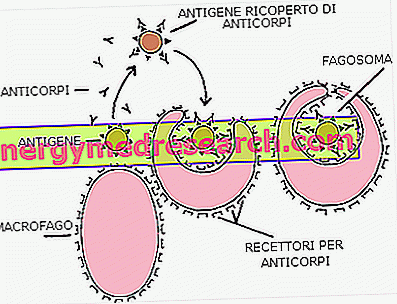TRAVELGUM ® is a drug based on dimenhydrinate.
THERAPEUTIC GROUP: Antiemetics - Antinausea.
IndicationsAction mechanismStudies and clinical effectiveness Usage and dosage instructionsWarnings Pregnancy and lactationInteractionsContraindicationsUndesirable effects
Indications TRAVELGUM ® Dimenhydrinate
TRAVELGUM ® is indicated for the prevention of nausea and vomiting during travel by car, train, plane and ship.
Mechanism of action TRAVELGUM ® Dimenhydrinate
The formulation of TRAVELGUM ® in chewable gums, guarantees an effective perilingual absorption, of about 60% of the total content of Dimenhydrinate, with a significant first pass hepatic metabolism and an estimated half-life of around 4-6 hours.
Its therapeutic efficacy, is essentially due to the antihistaminic capacity of the active principle guaranteed by the structure similar to diphenhydramine which makes it a rapid remedy for the symptomatology of motion sickness, also known as "movement sickness" that occurs in particularly predisposed subjects.
The antiemetic and antinausea action of the active principle is realized through the inhibition of H1 receptors for histamine, expressed above all at the level of the gastro-intestinal tissue and responsible for the symptoms associated with the cienetosis.
Studies carried out and clinical efficacy
1. DIMENIDRINATE AND INFECTIOUS GASTROENTERITE
Vomiting is one of the symptoms associated with infectious gastroenteritis in children. In most cases it is responsible for potentially dangerous dehydration for the health of children. The use of dimenhydrinate, today represents a therapy used in some states, but recent studies have shown that although able to reduce the frequency of vomiting episodes, it is not instead able to improve the degree of hydration, thus reiterating the above all preventive role of this active ingredient.
2. DIMENIDRINATO AND VERTIGINI
One of the symptoms most commonly associated with vestibular syndrome is the onset of vertigo and subsequent nausea. The use of dimenhydrinate in conjunction with other drugs has proven to be particularly effective in reducing vertigo and the feeling of nausea and vomiting due to these conditions.
3. DIMENIDRINATO AND NAUSEA POST-OPERATORIA
The post-operative nausea, associated with sedating therapy, is one of the most annoying clinical manifestations following surgery, making the post-operative course particularly complicated. Although dimenhydrinate is today a possible therapeutic approach useful in preventing this condition, there is currently no statistical evaluation, such as to be able to compare the effectiveness of this drug to others of the same category. For this reason, a careful critical and clinical re-evaluation is necessary, in order to establish the correct role of this drug in the treatment of post-operative nausea.
Method of use and dosage
TRAVELGUM ® 20 mg chewable dragee dimenhydrinate:
taking this medicine should begin with the onset of the first symptoms of nausea associated with motion sickness and possibly continue for a maximum of 4 sugared almonds a day taken at regular intervals of 3-4 hours, following the persistence of the symptoms .
The dose should be halved in pediatric patients.
Taking into account that the first therapeutic effects occur after a few minutes of taking TRAVELGUM ® to maximize within the first two hours, it is possible to take the medicine before a certain trip, in order to prevent the possible appearance of the aforementioned symptoms.
Warnings TRAVELGUM ® Dimenhydrinate
In order for the correct perilingual absorption of the active ingredients contained in TRAVELGUM ® to be guaranteed, it is important that the candy be chewed and not swallowed.
The presence of glucose and sucrose in the medicine requires controlled use in patients suffering from diabetes or glucose malabsorption syndromes, while the presence of aspartame makes it particularly dangerous to use in patients suffering from phenylalanine hydroxylase enzyme deficiency.
The drug's ability to counteract normal renal and urinary excretory function may worsen the clinical condition in patients with prostatic hypertrophy or with altered bladder and excretory function.
Some of the sedating effects induced by the inhibition of H1 receptors for histamine, particularly drowsiness and dizziness, could make the use of machinery or driving vehicles dangerous.
PREGNANCY AND BREASTFEEDING
Pharmacokinetic and clinical trial studies have not shown toxic or teratogenic effects of dimenhydrinate when taken during pregnancy even during the first trimester. Despite these data, it would still be advisable to avoid taking this medicine during the first trimester of pregnancy, and possibly, in subsequent quarters, to resort to it only in case of real need and under strict medical supervision.
Interactions
The sedative effects induced by the antihistamine action of TRAVELGUM ® can be enhanced by the concomitant intake of hypnotic, sedative and tranquilizing drugs.
On the contrary, some of the most important side effects, such as ototoxicity, associated with dimenhydrinate therapy, could be masked by the concomitant intake of antibiotic-acting drugs, detected only when the symptoms become particularly intense and the relative irreversible damage.
Contraindications TRAVELGUM ® Dimenhydrinate
TRAVELGUM ® is contraindicated during the first trimester of pregnancy and the subsequent lactation period, in case of hypersensitivity to one of its components and in patients with phenylketonuria.
Undesirable effects - Side effects
The most common side effects described following the use of TRAVELGUM ® are associated with the sedative effects of the drug, with the appearance of drowsiness, dry mouth, accommodation, headaches and anorexia.
Dermatological allergic reactions have been described more rarely as dizziness, asthenia, insomnia, tremors and hypotension.
Note
TRAVELGUM ® is an OTC drug, without a prescription, therefore it can be sold freely.



